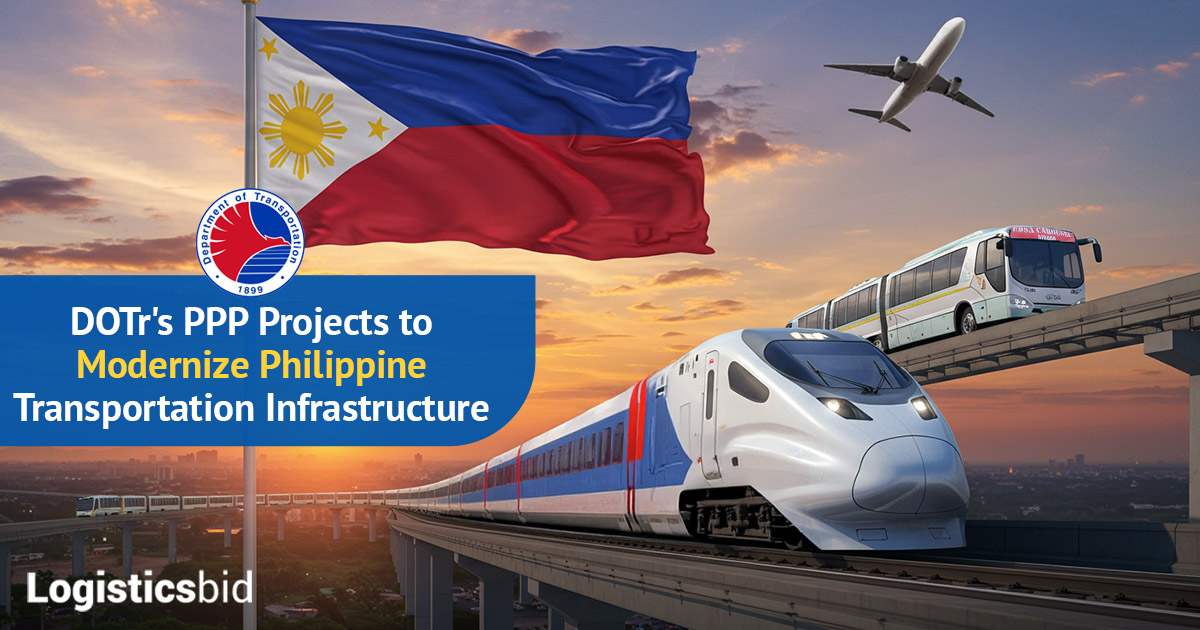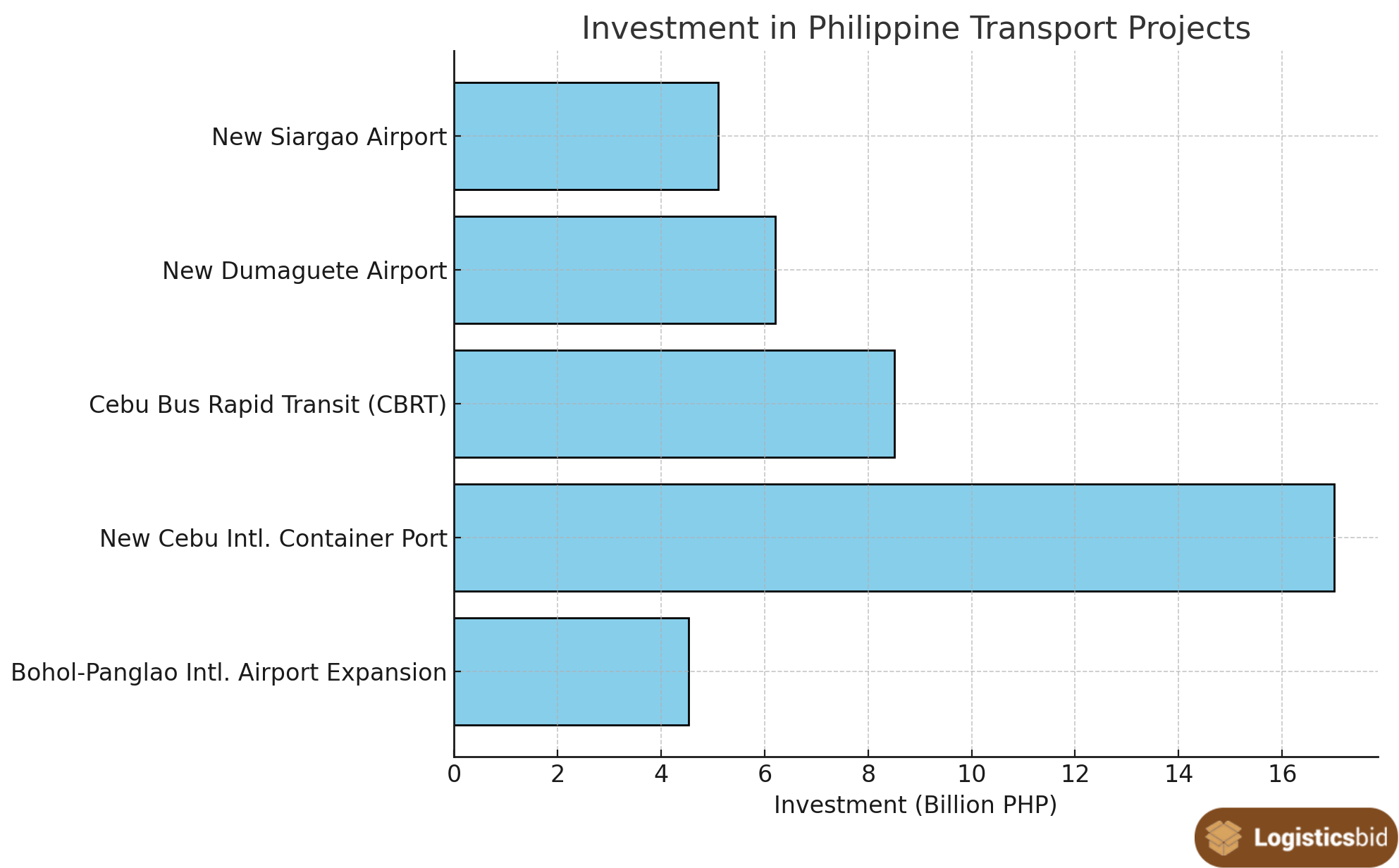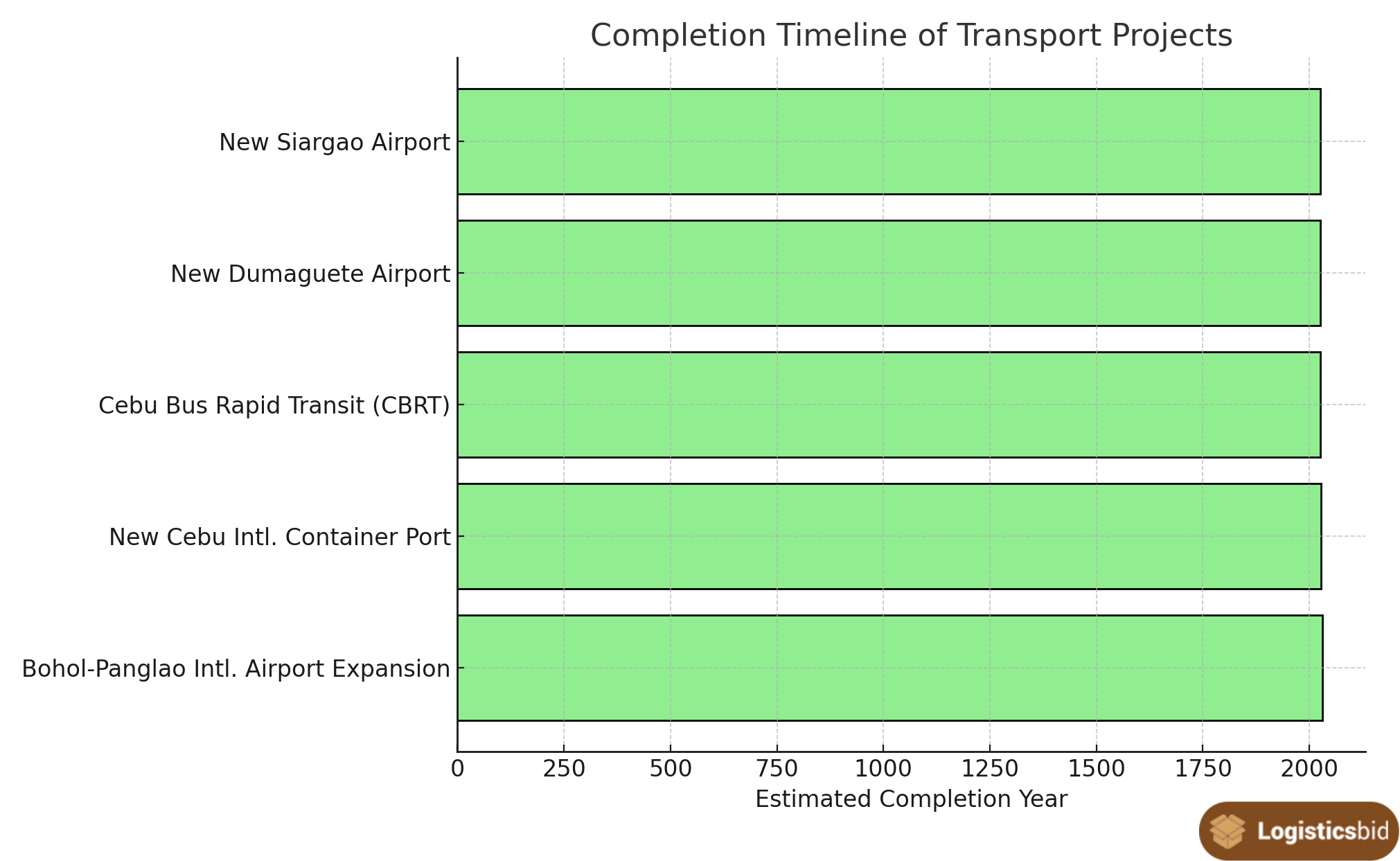
The Department of Transportation (DOTr) in the Philippines has recently signed agreements to modernize and expand five public-private partnership (PPP) transport projects. These initiatives are set to enhance the country’s transportation infrastructure, offering more comfortable travel and better opportunities for Filipinos.
Infrastructure Development Agreements Signed

- Bohol-Panglao International Airport Expansion: A concession agreement worth ₱4.53 billion has been signed to expand the airport’s capacity. The project aims to increase passenger throughput from the current 2 million to at least 2.5 million annually within the first two years of operation, with further plans to reach 3.9 million by 2030.
- New Cebu International Container Port (NCICP): A civil works contract valued at ₱17 billion has been awarded for the construction of the NCICP. This project is expected to alleviate congestion at the existing Cebu Base Port, create thousands of jobs, and provide increased space for port activities.
- Transaction Advisory Services Agreements: The DOTr has entered into agreements with the International Finance Corp. (IFC) for the development of the New Dumaguete and Siargao airports, the Cebu Container Port, and the Cebu Bus Rapid Transit (CBRT) system. These partnerships aim to enhance the capacity and efficiency of these transport facilities.
Transportation Infrastructure Timeline and Expectations

- New Cebu International Container Port (NCICP): The project is expected to be completed by November 2027.
- Bohol-Panglao International Airport Expansion: The initial phase aims to increase capacity to 2.5 million passengers per year within one to two years of operation, with further expansions planned to reach 3.9 million passengers annually by 2030.
- New Dumaguete and Siargao Airports: Development plans are currently underway, with support from the International Finance Corp. Specific timelines are yet to be announced.
These projects signify a significant step towards improving transportation infrastructure and services in the Philippines. They are expected to benefit the economy, tourism, and the environment, providing better opportunities for the Filipino people. The Department of Finance recognizes the importance of private sector participation in nation-building and is actively pursuing greater investments in infrastructure development.
The Role of PPP in Advancing Philippine Infrastructure
The Public-Private Partnership (PPP) model has been pivotal in driving infrastructure development in the Philippines. By leveraging private sector expertise and funding, the government can accelerate the implementation of large-scale projects that address urgent public needs. The recently signed agreements between the Department of Transportation (DOTr) and various private entities highlight this partnership’s potential.
Benefits of the Projects
- Economic Growth: The modernization and expansion of these transport projects are anticipated to stimulate economic growth by improving connectivity and accessibility across the country.
- Job Creation: The construction and subsequent operation of these projects are expected to generate thousands of jobs, contributing to the reduction of unemployment rates in the regions involved.
- Enhanced Transportation Services: Projects like the CBRT will improve the public transportation system by providing efficient and reliable transit options, thereby reducing travel time and costs for commuters.
- Increased Tourism: The expansion of airports, particularly in tourist destinations like Bohol and Siargao, is expected to boost tourism by accommodating more passengers and providing better services.
Economic and Environmental Impacts
These projects will collectively address some of the most pressing challenges in Philippine transportation infrastructure. The emphasis on sustainability, efficiency, and inclusivity ensures these developments contribute positively to the nation’s long-term goals.
- Economic Impact
- Job Creation: An estimated 20,000 direct and indirect jobs will emerge from these projects.
- Boost in GDP: Improved infrastructure is projected to contribute an additional 1.5% to the country’s GDP by 2028.
- Tourism Revenues: Enhanced airport facilities could increase tourism receipts by ₱50 billion annually.
- Environmental Impact
- Reduced Emissions: The CBRT system and modern airport facilities will use green technologies to lower carbon footprints.
- Energy Efficiency: Renewable energy sources, such as solar power, are being incorporated into airport designs.
Public Sentiment and Government Support
Public response to these initiatives has been largely positive. Filipinos view these projects as a sign of progress and a commitment to addressing long-standing infrastructure bottlenecks. The government, for its part, continues to emphasize the importance of private sector participation in achieving its “Build, Better, More” agenda.
Addressing Challenges and Ensuring Project Success
The modernization and expansion of these PPP transport projects come with challenges. Recognizing and mitigating these hurdles will be key to ensuring the success and sustainability of these initiatives.
Challenges in Implementation
- Land Acquisition and Legal Issues
Acquiring land for infrastructure development remains a significant challenge in the Philippines. Delays due to legal disputes or opposition from affected communities can slow progress.Mitigation Strategies:- Transparent consultation processes with stakeholders.
- Fair and timely compensation for affected residents.
- Funding and Budgetary Constraints
While PPPs reduce government spending, private investors may face financial risks, especially in large-scale projects. Fluctuations in economic conditions could also impact project financing.Mitigation Strategies:- Diversified funding sources, including international development banks like the Asian Development Bank (ADB).
- Risk-sharing agreements between the government and private entities.
- Environmental Concerns
Large infrastructure projects can disrupt ecosystems, particularly in areas like Siargao, which are environmentally sensitive.Mitigation Strategies:- Conducting comprehensive environmental impact assessments.
- Integrating sustainable practices, such as the use of renewable energy and eco-friendly materials.
- Operational and Maintenance Challenges
Ensuring the long-term success of these projects requires effective management and regular maintenance.Mitigation Strategies:- Implementing performance-based contracts with private operators.
- Establishing independent regulatory bodies for oversight.
The Vision for Philippine Transportation
The modernization of the country’s transportation infrastructure aligns with the government’s “Build, Better, More” initiative, which aims to create a robust network of roads, ports, and airports. These efforts are designed to position the Philippines as a regional logistics hub while enhancing the quality of life for its citizens.
Key Goals for the Next Decade
- Improved Mobility: Reducing travel times and costs through efficient public transport systems like the Cebu Bus Rapid Transit (CBRT).
- Global Competitiveness: Developing world-class airports and ports to attract international businesses and tourists.
- Sustainability: Incorporating green technologies and sustainable practices into all infrastructure projects.
The agreements signed for the modernization and expansion of these five PPP transport projects mark a transformative step for the Philippines. These initiatives will not only alleviate long-standing infrastructure bottlenecks but also position the country for sustained economic growth and environmental resilience.
Why This Matters:
- For Filipinos: Enhanced transportation services mean better opportunities, improved quality of life, and more accessible travel.
- For the Economy: New infrastructure will attract investments, generate jobs, and boost GDP.
- For the Environment: Sustainable practices ensure development does not come at the expense of natural resources.
As these projects progress, the success of the Public-Private Partnership model will be a testament to the Philippines’ commitment to innovation, inclusivity, and growth. The DOTr’s proactive collaboration with private entities and global organizations like the IFC and ADB is a promising sign of what lies ahead.
